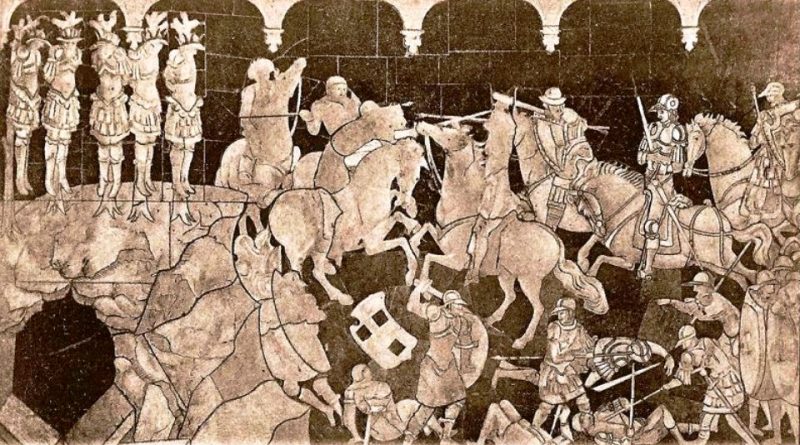The Amorites and agriculture
The Amorites and agriculture
The Amorites were an ancient Semitic population that developed in the Levant region, corresponding to present-day Syria, Lebanon, Israel and Palestine, during the period between 2000 BC. and 1600 BC. The word “Amorrei” comes from the Sumerian term “Martu”, which was used to refer to nomadic tribes from the desert region west of Mesopotamia.
The Amorites did not constitute a single unitary state, but were divided into numerous independent city-states that had a certain cultural and linguistic affinity. Among the most important Amorite city-states were Babylon, Mari and Assur. These city-states often found themselves in conflict with the dominant powers of the region, such as the Akkadians and Sumerians.
By about 2000 BC, the Amorites managed to establish their rule over various regions, including the city of Babylon, which became an important political and economic center. However, during the 2nd millennium BC, the Amorites had to contend with the emergence of other regional powers, such as the Hittites and Egyptians.
The Hittites, from what is now Anatolia (Turkey), inflicted heavy defeats on the Amorites and eventually succeeded in establishing their rule over much of the Levant. The Egyptians, under the reign of Pharaoh Thutmose III, conducted a series of military campaigns to expand their empire and defeated the Amorites in several battles.
Despite the defeats suffered, the Amorites retained some cultural influence in the region, as many of their cultural and linguistic elements spread among the local populations. In particular, the Amorite language influenced the evolution of the Semitic languages spoken in the region.
As new powers emerged in the Levant, such as the Hittites and Egyptians, the Amorites gradually lost their identity as a distinct political and cultural entity. Over time, they were assimilated or absorbed by other populations of the region and their history as an autonomous people ended around 1600 BC.
The Amorite heritage, however, continued to influence the history and culture of the region. For example, many of the city-states founded by the Amorites became important cultural and political centers in later times, such as Babylonia and Assur. The Amorite language and its influence on the Semitic languages continued to be present even after the demise of the Amorites as an independent political entity.
Agriculture –
The Amorites were primarily a nomadic and semi-nomadic people, but they also had agricultural communities.
The agriculture of the Amorites was basically based on the cultivation of cereals such as wheat, barley and millet. These cereals formed the basis of food and the economy of the Amorites. They also cultivated legumes such as peas and lentils.
To practice agriculture, the Amorites used irrigation systems to make the most of the water resources available in the region. They built canals and ditches to bring water to the fields and ensure good plant growth. These irrigation systems were essential in meeting the challenges of an arid region like Mesopotamia and the Land of Canaan.
The Amorites also owned livestock, such as sheep, goats and cattle, which they used for milk, meat and wool. Cattle ranching was an important component of the Amorite economy and provided pastoralists with a source of food and other products.
However, due to their nomadic nature, the Amorites were also hunters and gatherers. They exploited the natural resources available in the region, such as game hunting and wild fruit gathering, to supplement their agricultural and pastoral diet.
Agriculture of the Amorites, although less developed than civilizations such as the Sumerians or the Egyptians, still represented an essential component of their economy and way of life. It was a key element in the supply of food and other resources necessary for the survival and growth of Amorrian society.
Agricultural tools and artifacts –
Though nomadic, they had created communities that practiced agriculture and were also known for their manufacturing skills. There are not many finds, however for the particular agricultural practices it is assumed that they used the following tools:
1. Plough: The Amorites used the plow to prepare the land for sowing. The plow consisted of a wooden shaft with a metal or stone blade at the lower end, which was pulled by pack animals such as oxen or donkeys.
2. Hoe: The hoe was an agricultural tool used to work the soil and remove weeds. It consisted of a wooden handle with a metal or stone blade at the end.
3. Sickle: The Amorites used the sickle to harvest grain and other crops. The scythe consisted of a sharp blade, usually made of metal, attached to a curved wooden handle.
4. Sickle: The sickle was a tool similar to a sickle, but smaller. It was used to cut herbs, forage and other low-rise plants.
5. Millstones: The Amorites used millstones to grind wheat and other grains to produce flour. The millstones were made of stone and were operated manually or with the help of pack animals.
6. Pottery: The Amorites were known for their pottery making skills. They produced pottery of various types, such as vases, bowls and plates, which were used for domestic and commercial purposes.
7. Textiles: The Amorites were skilled weavers and produced fabrics from wool, linen, and other materials. They made clothes, carpets, curtains and other textile products.
8. Jewelry: The Amorites were also known for their jewelry making. They made rings, bracelets, earrings and necklaces, often decorated with precious stones and pearls.
Their culture and manufacturing skills varied across time and space, but agriculture and manufacturing were central to their civilization.
Guido Bissanti

